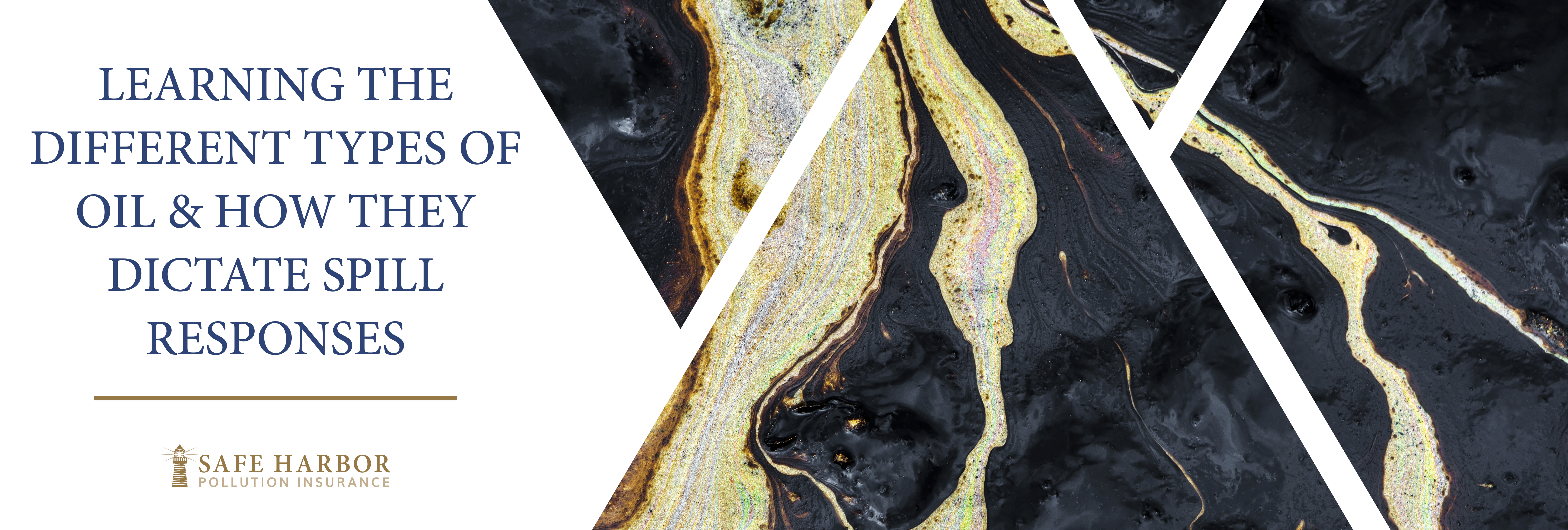The substances categorized as “oil” range from crude oil and refined petroleum products to animal fats and vegetable oil. What they all have in common is a hydrocarbon base. For the purposes of this article, we’ll focus on explaining the most common substances released during an oil spill:
- Crude Oil: A naturally occurring, unrefined petroleum product.
- Refined Petroleum Products: The products created when crude oil is refined, such as petroleum, gasoline, diesel, kerosene, jet fuel, and many others.
- Bunker Fuel: Any fuel used in a ship's bunkers to power its engines. This is typically the heavy, residual oil left over after gasoline, diesel, and other light hydrocarbons are extracted from crude oil during the refining process.
- Waste Oil: Any petroleum-based or synthetic oil that has been contaminated and lost its original properties, rendering it unsuitable for its original purpose.
The physical and chemical properties of each type of oil determine how it will spread and break down in the event of a spill. This means clean-up responses need to be tailored to what was spilled, which is why oils have been categorized into five groups to aid response and planning efforts. Per NOAA:
- Group 1: Non-Persistent Light Oils (Gasoline, Condensate)
-
- High volatility and concentrations of toxic compounds
- Full evaporation—no residue after 1-2 days
- Localized, severe impacts to water column and intertidal resources
- Dangerous cleanup due to flammability and toxic air
- Group 2: Persistent Light Oils (Diesel, No. 2 Fuel Oil, Light Crudes)
-
- Moderately volatility and concentrations of toxic compounds
- Moderate evaporation—residue from up to one-third of spill amount remains after a few days
- Long-term contamination potential to intertidal resources
- Effective cleanup
- Group 3: Medium Oils (Most Crude Oils, IFO 180)
-
- Moderate to low evaporation—residue from up to two-thirds of spill amount remains after 24 hours.
- Severe potential impacts to intertidal resources, waterfowl, and fur-bearing mammals
- Effective cleanup if done quickly
- Group 4: Heavy Oils (Heavy Crude Oils, No. 6 Fuel Oil, Bunker C)
-
- Little or no evaporation or dissolution.
- Severe impacts to intertidal areas, sediments, waterfowl, and fur-bearing mammals
- Difficult cleanup at shoreline
- Group 5: Sinking Oils (Slurry Oils, Residual Oils)
- No evaporation or dissolution when submerged.
- Severe impacts to sediments and animals living in bottom sediments
- Cleanup similar to Group 4 if a shoreline spill, but oil will sink in water spills and avoid shoreline contamination
Being able to accurately identify the type of oil spilled and then deploy the quickest, most appropriate cleanup response is critical to containing an incident. Click here to learn more about how Safe Harbor handles spills and activates the largest spill response network in the industry.




